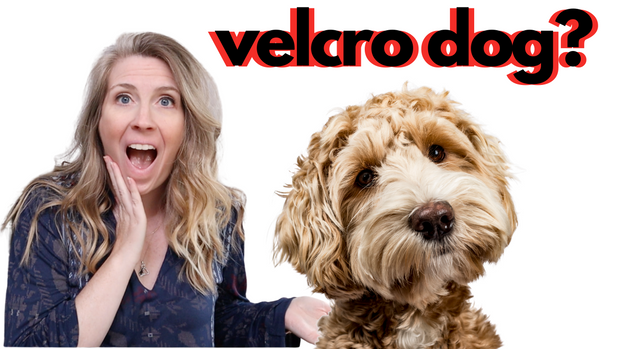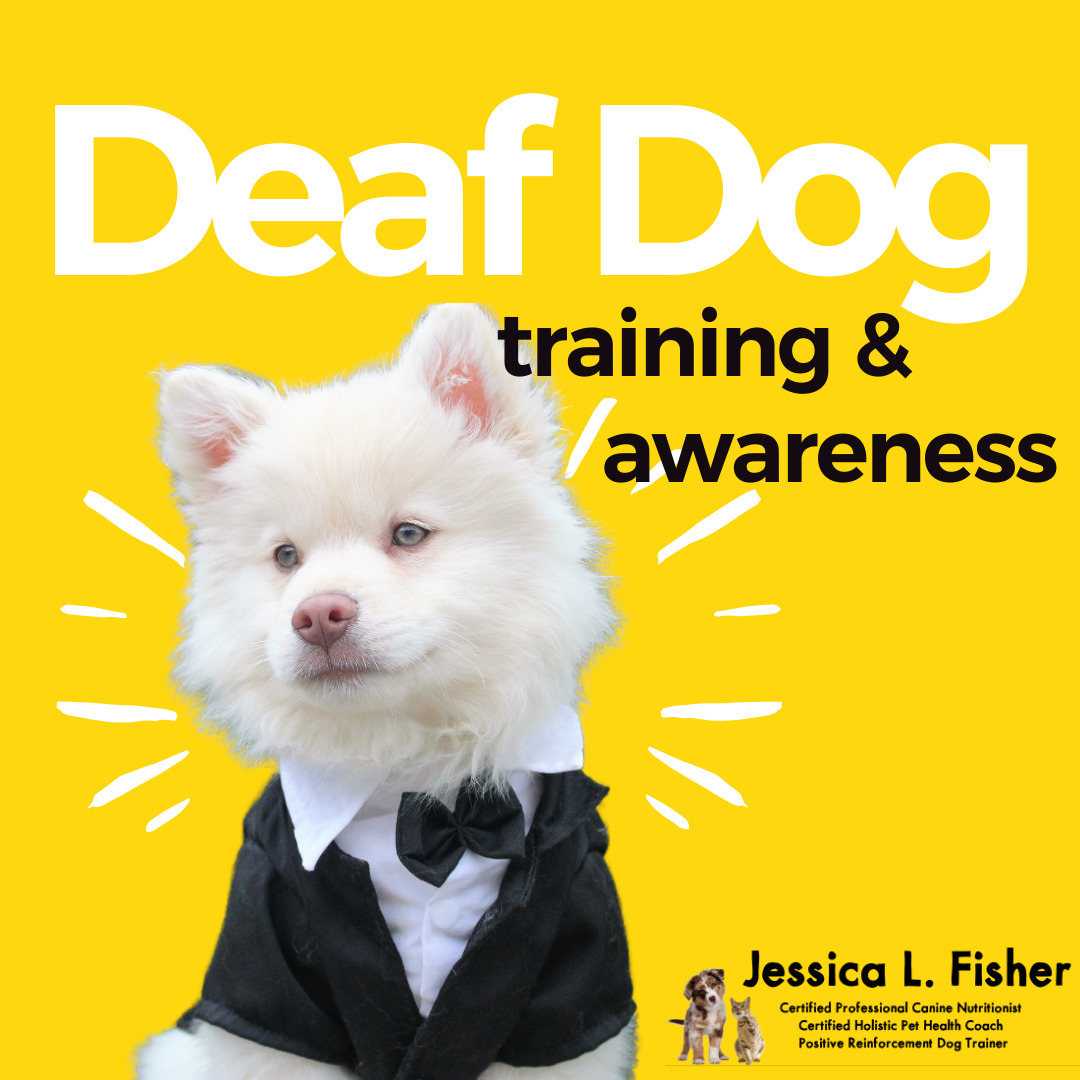I seem to have a knack for finding clingy dogs! Don’t get me wrong, I don’t mean that in a bad way, but both of the dogs that I have adopted on my own as an adult have been “velcro dogs.”
Claire was rescued from a hoarder situation and was in very poor health when I pulled her from a foster home. She needed so much medical attention and she spent a few weeks shying away from people until she had her mouth cleaned up (she had rotting teeth) and her mammary gland tumor was removed. Once she felt better, she was my shadow.
Honestly, I don’t blame her, she felt terrible and I helped her feel like a brand new dog! Back then I didn’t know much about dogs, but I loved her so much that I just did what felt right, including making food for her even though I had no idea what I was doing.
When I adopted Kimberly, I knew more, but still nothing like what I know today. For the first few weeks, she was attached to my husband. After our other dog, Gracie (the dog my husband had when we met) passed away, Kim became my shadow. She had been showing signs of separation anxiety since we adopted her, and that was actually what got me into dog training.
She is so much more confident now that sometimes I get kinda sad because I wish she was with me more!
All kidding aside, this move (we just moved to Texas) brought back some insecurities for Kim, and even though she is becoming more comfortable, it gave me the idea for this topic!
Before we get too far in, I do want to remind you that any sudden changes in behavior warrant a vet visit.
What is a “velcro dog?”
A velcro dog is basically a clingy dog. If your dog follows you from room to room, is always underfoot, jumps up on the couch with you, and has to be touching you, then you probably have a velcro dog!
That’s not necessarily a bad thing, but clinginess can lead to separation anxiety, and that’s certainly not a great thing.
Our dogs, much like toddlers, are very easily trained, especially when we don’t think we are training them. Any behaviors that you smile at, laugh at, or reward in any way, will be repeated. This means that clinginess is often a learned behavior!
What is a learned behavior?
Learned behaviors are developed as a result of experiences. In this case, if you adopt a small puppy and never leave their side during their developmental stage or provide any enrichment outside of you, then clinginess is the only outcome because you are all they know, all they have ever experienced. Or, if your dog follows you around from room to room and you reward it with praise or an ear scratch for example, then your dog will continue to follow you from room to room because the experience has molded the behavior.
Other reasons for clinginess in dogs
Of course, these are not the only reasons that a dog could become clingy. Changes in routine can cause increased clinginess, such as in our case with Kim. Age-related decline such as loss of vision, hearing, or any other decline physical or mental could lead to clinginess from your dog.
Boredom and anxiety are also well known for causing clinginess in your dog. And, of course, we can’t rule out those dogs that are known for their clinginess, usually smaller dogs like Shih Tzus and Chihuahuas.
How do I know if it’s clinginess or separation anxiety?
It can be difficult to determine if your dog truly has separation anxiety, something I’ve talked about in a few other posts, but there is one main difference between separation anxiety and a clingy dog that should help you determine where your dog lies on the spectrum.
A clingy dog will want to be with you and even touch you when you are home, but a dog with separation anxiety will have difficulty when you leave the house. Separation anxiety isn’t one size fits all, and there is a scale on reactivity when you leave the home, but a dog that is simply clingy won’t panic when you leave.
What is important to know is that if you have a clingy dog, while it’s cute and oftentimes even comforting to us, it is important that we work with our dog to keep that clinginess in check because it can progress into separation anxiety in some dogs if we let it.
How can I help my clingy dog?
The best thing we can do for clingy dogs is to encourage independence and confidence. Enrichment exercises are a great way to help build confidence, as well as positive reinforcement training.
For training, you don’t have to become a professional dog trainer, just about anything you work with your dog to learn, as long as you are using positive reinforcement, will help build their confidence!
Enrichment encompasses all sorts of activities, both mental and physical, where your dog can learn to work on her own and also that rewards come from her figuring things out. One example would be rolling up a towel with food or treats inside and your dog unrolling it to get to the treats.
Of course, the sky is the limit on these types of exercises, and many people can get quite creative! For Patreon supporters, there is a file in our shared folder that contains over 30 enrichment activities!
Teaching your dog scent work is another great confidence-building activity. Some dogs are very active and would enjoy sporting activities such as agility or dock diving. You don’t have to enroll your dog in summer camp to help them, but it just goes to show you that there really are tons of ideas out there for any type of dog, just find the ones that work best for you and your dog!
Give your dog space
It is also important that your dog have their own space where they can engage in these enrichment activities possible, but more importantly, rest and be by themselves.
For some dogs, crate training is a good idea, though I do have to give my obligatory warning that putting your dog in a crate and closing the door is not crate training!
When Gracie and Claire were still with us, they had a shade crate, not because we didn’t want two crates, but because they were very bonded and did everything together. We left the crate door open, filled it with blankets and two dog beds and they used it just like their own little bedroom.
That’s what worked for us, but every dog is different. You and your dog will need to work this arrangement out to suit each of your needs. Kim also has a crate, and like the last, it stays open all the time. She will sometimes wander in and sleep, and I have worked with her on closing the door so she is comfortable with it, but she doesn’t need to be confined.
I’d love to know what creative ways you work with your dog to encourage independence and confidence, as well as how you and your dog handle the crate or “safe space” as I like to call it! Let me know in the comments.




